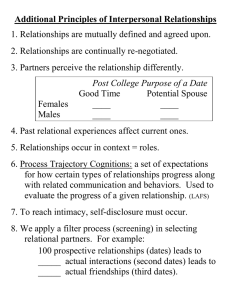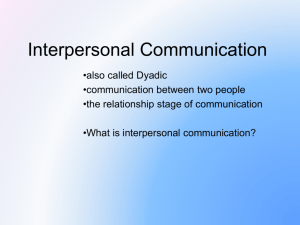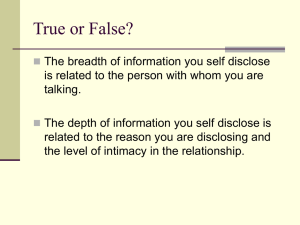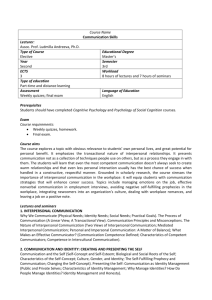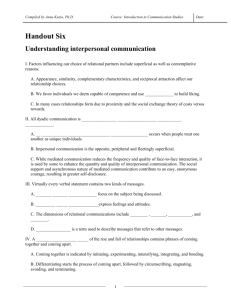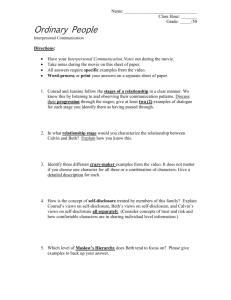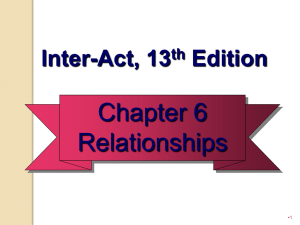Interpersonal Communication Final Study Guide
advertisement
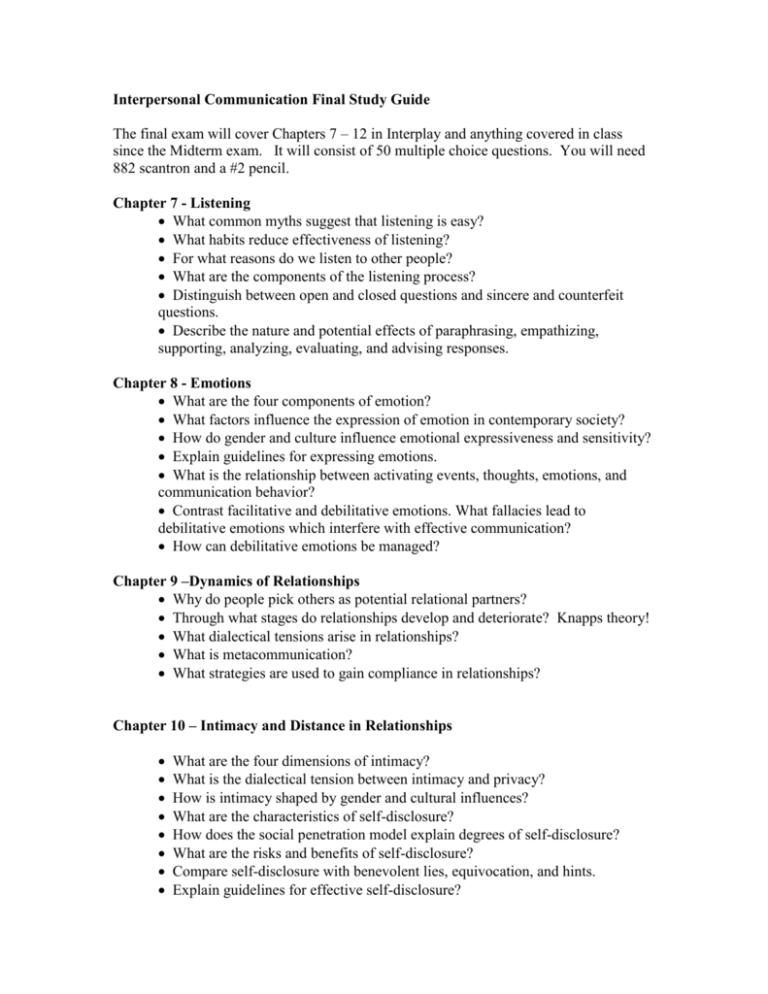
Interpersonal Communication Final Study Guide The final exam will cover Chapters 7 – 12 in Interplay and anything covered in class since the Midterm exam. It will consist of 50 multiple choice questions. You will need 882 scantron and a #2 pencil. Chapter 7 - Listening What common myths suggest that listening is easy? What habits reduce effectiveness of listening? For what reasons do we listen to other people? What are the components of the listening process? Distinguish between open and closed questions and sincere and counterfeit questions. Describe the nature and potential effects of paraphrasing, empathizing, supporting, analyzing, evaluating, and advising responses. Chapter 8 - Emotions What are the four components of emotion? What factors influence the expression of emotion in contemporary society? How do gender and culture influence emotional expressiveness and sensitivity? Explain guidelines for expressing emotions. What is the relationship between activating events, thoughts, emotions, and communication behavior? Contrast facilitative and debilitative emotions. What fallacies lead to debilitative emotions which interfere with effective communication? How can debilitative emotions be managed? Chapter 9 –Dynamics of Relationships Why do people pick others as potential relational partners? Through what stages do relationships develop and deteriorate? Knapps theory! What dialectical tensions arise in relationships? What is metacommunication? What strategies are used to gain compliance in relationships? Chapter 10 – Intimacy and Distance in Relationships What are the four dimensions of intimacy? What is the dialectical tension between intimacy and privacy? How is intimacy shaped by gender and cultural influences? What are the characteristics of self-disclosure? How does the social penetration model explain degrees of self-disclosure? What are the risks and benefits of self-disclosure? Compare self-disclosure with benevolent lies, equivocation, and hints. Explain guidelines for effective self-disclosure? Chapter 11 – Communication Climates What is communication climate? Differentiate among various types of confirming, disagreeing, and disconfirming messages. How do climates spiral? What types of messages are likely to create positive climates as opposed to defensive ones? Chapter 12 – Conflict Explain the five elements of conflict? What does it mean to say that conflict is natural and inevitable? Contrast the characteristics of functional and dysfunctional conflict? Contrast styles of response to conflict: nonassertiveness, indirect communication, passive aggression, direct aggression, and assertiveness? What are conflict rituals? Contrast win-lose, lose-lose, compromise, and win-win methods of conflict management.
